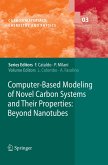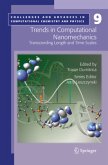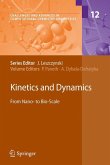During the last twenty years, the multiplicity of potential carbon structures has consistently posed a formidable challenge to theoretical and computational physicists. Several different methods are currently being used to study the structure and the properties of such systems. These methods include simulations based on empirical potentials, tight-binding calculations and density functional theory (DFT). A combination of these methods is needed to make significant progress in the carbon field.
This volume provides the reader with a survey of state-of-the-art theoretical and computational contributions featuring novel carbon systems (excluding nanotubes). The chapters are authored by leading researchers who are all actively involved with different aspects of carbon structure and property elucidation. Consequently, a variety of methods are presented to the reader. The editors have successfully compiled an informative book that:
- Showcases the latest results in carbon materials
- Demonstrates how different theoretical methods are combined
- Explains how new carbon structures are predicted
Computer-Based Modeling of Novel Carbon Systems and Their Properties is aimed at advanced undergraduates, graduates, and researchers with an interest in computational nanomaterials.
This volume provides the reader with a survey of state-of-the-art theoretical and computational contributions featuring novel carbon systems (excluding nanotubes). The chapters are authored by leading researchers who are all actively involved with different aspects of carbon structure and property elucidation. Consequently, a variety of methods are presented to the reader. The editors have successfully compiled an informative book that:
- Showcases the latest results in carbon materials
- Demonstrates how different theoretical methods are combined
- Explains how new carbon structures are predicted
Computer-Based Modeling of Novel Carbon Systems and Their Properties is aimed at advanced undergraduates, graduates, and researchers with an interest in computational nanomaterials.
From the reviews:
"A collection of separate studies, each looking at a different range of 'novel carbon system'. ... book will serve for many researchers as an excellent guide to what has already been done, and also highlights where there are still gaps. It will be equally at home on the desk of a starting PhD student as a more experienced researcher. I strongly recommend it for anyone with a general interest in materials physics, as well as the more focussed reader doing computer-based modelling of carbon-based materials." (Matt Probert, Contemporary Physics, June, 2013)
"A collection of separate studies, each looking at a different range of 'novel carbon system'. ... book will serve for many researchers as an excellent guide to what has already been done, and also highlights where there are still gaps. It will be equally at home on the desk of a starting PhD student as a more experienced researcher. I strongly recommend it for anyone with a general interest in materials physics, as well as the more focussed reader doing computer-based modelling of carbon-based materials." (Matt Probert, Contemporary Physics, June, 2013)








